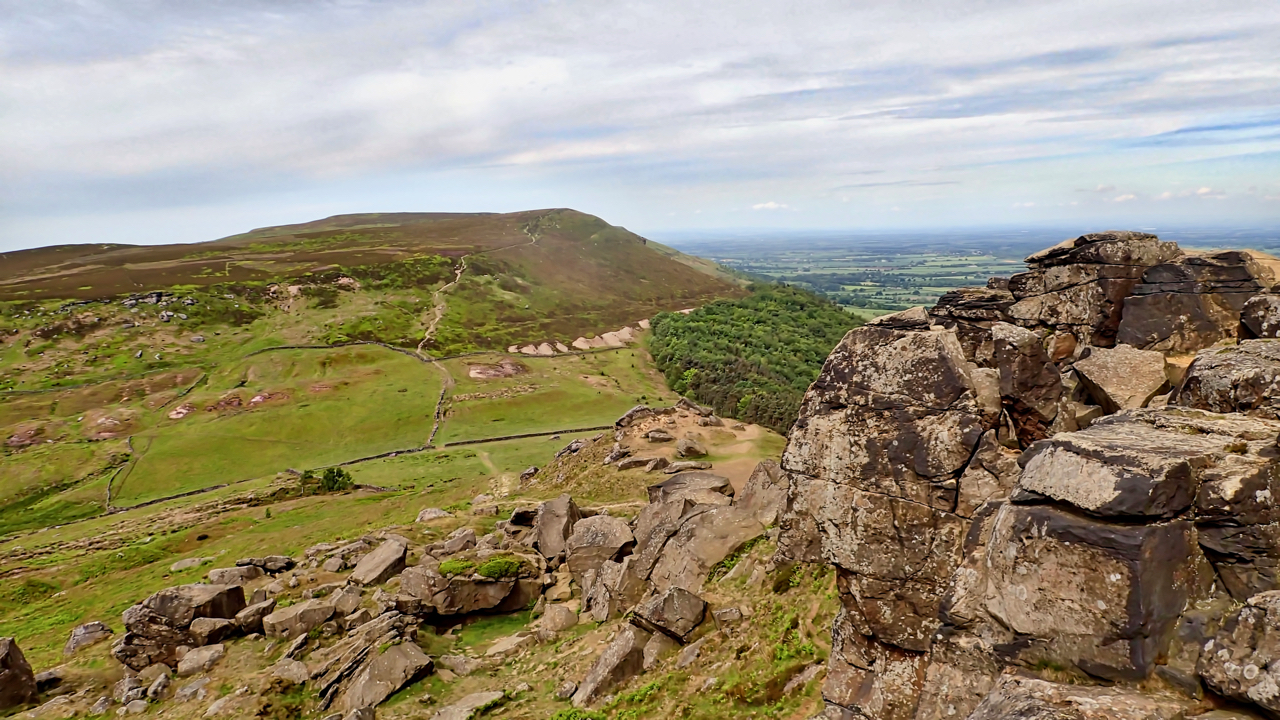One of my main sources of knowledge and inspiration is Frank Elgee’s 1912 book The Moorlands of North Eastern Yorkshire. Elgee was born in 1880 and was a distinguished writer of the geology, archaeology and natural history of the North York Moors. Largely self-taught, he was the curator of the Dorman Museum in Middlesbrough from 1923 to 1933 when he retired due to ill health. His words cannot be bettered:
“At the western end of Hasty Bank occurs that familiar group of boulders, the Wainstones, consisting of pillars or columns of sandstone more or less isolated from one another, together with a fantastic jumble of rocks of all shapes and sizes. Derived from the Bajocian sandstone of the hill summit, the Wainstones exhibit the influence of the weather upon this kind of rock. Vertical lines of joint or ” backs ” have been widened without the masses slipping away from the face of the cliff, and as these masses have been attacked on all sides by the weather, they have slowly been sculptured into picturesque pillars or monoliths. Varying degrees of hardness in the successive layers of sandstone have produced unequal erosion along lines of bedding — the softer layers being worn away more rapidly than the harder — so that we sometimes come across masses of rock supported by a comparatively slender pedestal.
Still proceeding westwards we reach the interesting outlier of Cold Moor, likewise 1300 feet high. From the plain this hill appears quite conical, though in reality we are looking at a section of a roughly oval piece of moorland, two miles in length from north to south, and often nearly a mile wide. Cold Moor divides the heads of Bilsdale and Raisdale, and nothing can be more impressive than its long sweeping slope rising from the south to the very edge of the escarpment.”

Leave a Reply